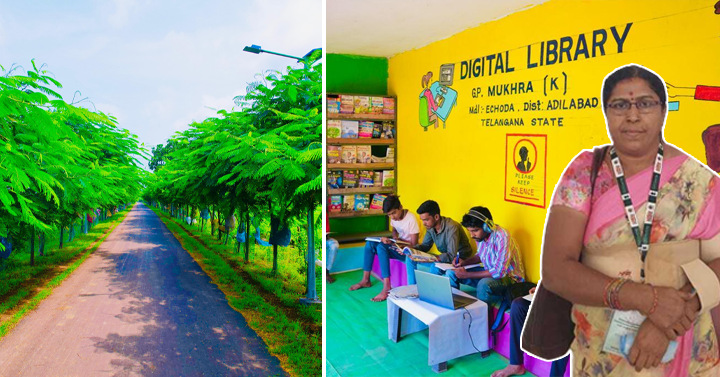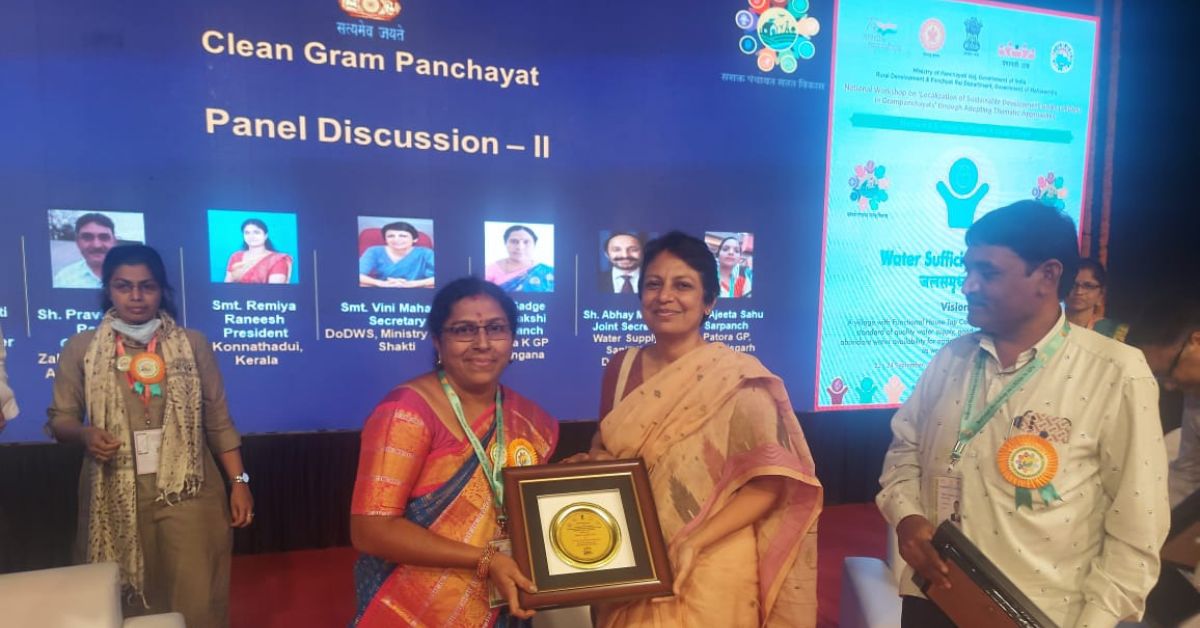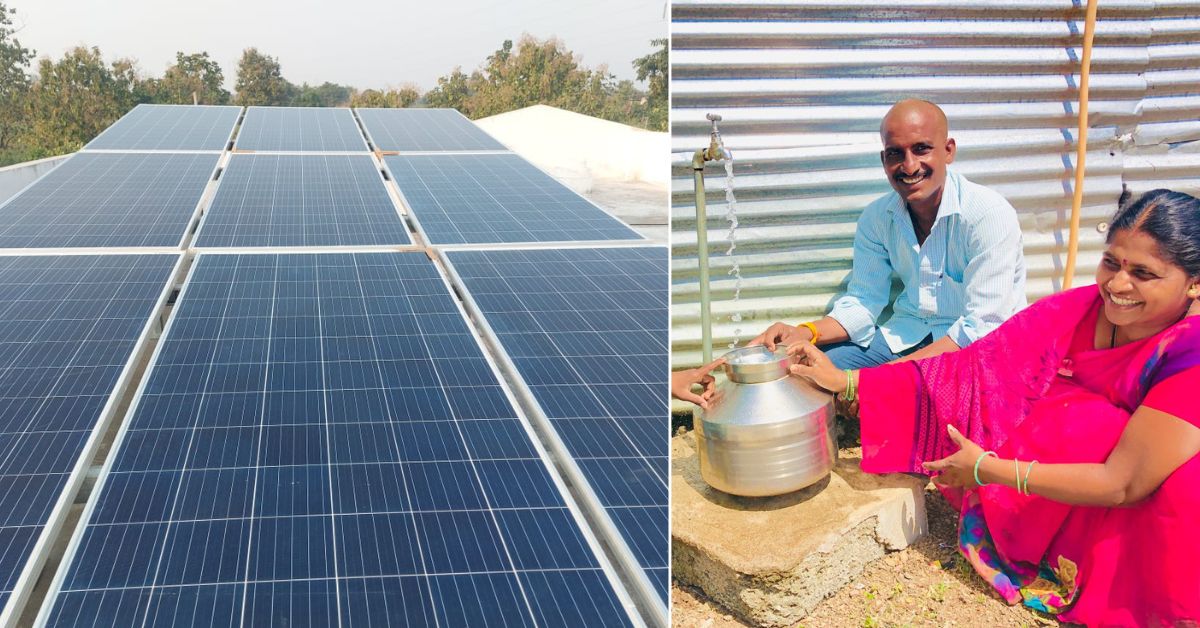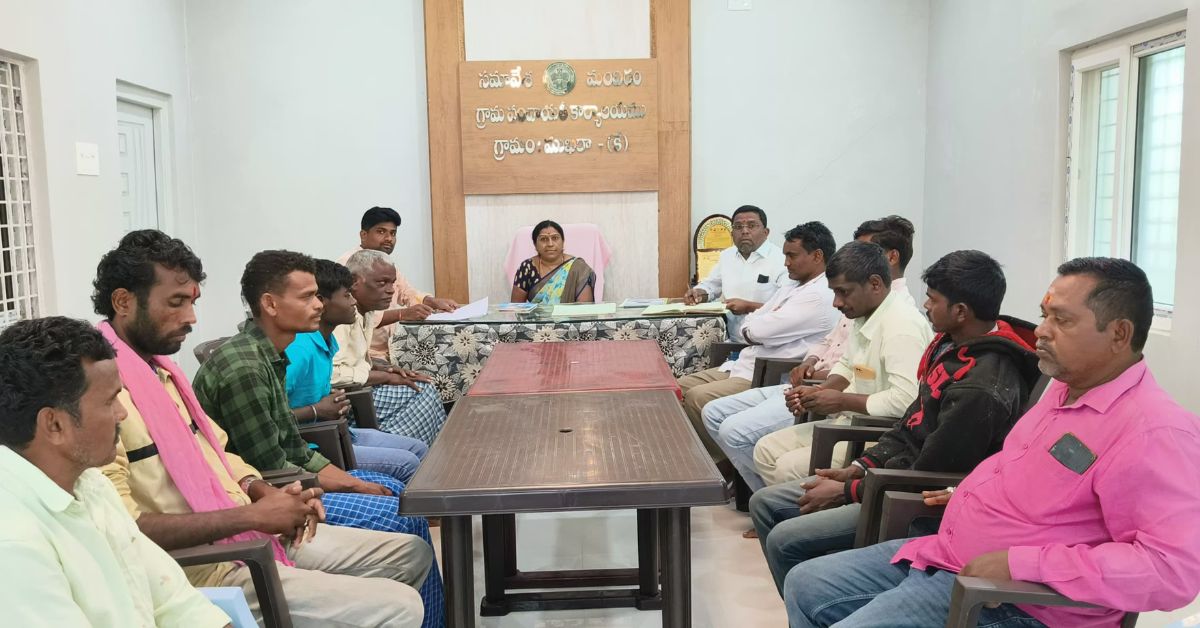Earning Lakhs From Compost, Solar-Powered Village Wins 5 National Awards
Telangana's Mukhra K village has emerged to be a model for gram panchayats across India. Behind this award-winning model is its sarpanch Gadge Meenakshi. She shares how she transformed the village.

Nestled amid mountains and surrounded by lush green trees, Mukhra K village in Telangana is exemplified by its beautification and massive transformation. Just a couple of years back, the kaccha roads in the village would overflow with sewage causing mosquito menace. The villagers still went out to defecate in the open, and education was a distant luxury here.
However, the same village has now become a model for gram panchayats in the Adilabad district of the state. The village has transformed in many facets – local people today responsibly segregate waste, help maintain cleanliness around the property by utilising a soak pit, and households have become energy self-sufficient.
For its incredible transformation, the village has also bagged several national-level awards including the National-level Gram Urja Swaraj Vishesh Award 2023, Swacch Sujal Shakti Samman 2023, Deen Dayal Upadhyay Panchayat Shashaktikaran Purashkar 2022, and the Biodiversity award and Swacch Sarvekshan Award 2020.

Behind this huge village makeover is its sarpanch Gadge Meenakshi. For her remarkable efforts, she was felicitated by President Droupadi Murmu ahead of the International Women’s Day last year.
In conversation with The Better India, she sheds light on how she achieved this massive transformation.
Taking on a village in dire straits
Growing up, Meenakshi herself experienced the lack of basic amenities in the village. “We had school till class V in our village. For higher studies, we would be forced to go out. This was the period when most of the girls would drop out. Anyway, I pushed myself to study till class 12 at least,” she tells The Better India.
“For this, I would walk for three kilometres to the highway to catch a bus to the school that was further eight km away. In all, I would daily travel 11 km to reach school,” she adds.
Highlighting additional woes of the village, she informs, “There was no proper drainage system in the village. Often, drains would overflow on the pathways, making it difficult to move about. This would also become a breeding ground for mosquitoes. Doctors did not stay long in our village because of poor infrastructure and the huge patient workload.”

“Our complaints would fall on deaf ears of the previous sarpanch who lived very far off from this village. The condition, and the littering habits of people, remained the same,” she adds.
The village’s plight continued until 2019 when Meenakshi was elected as the village head.
In her first step towards transformation, Meenakshi focused on achieving an Open Defecation-Free (ODF) tag by constructing toilets in all households. “Often, women would complain that they felt shy and embarrassed to go out in the fields which were also used by men for defecating,” she says.
Initially, there were 22 toilets in the village. Under Swachh Bharat Abhiyan Gramin, the gram panchayat constructed toilets in all the 210 households of the village. “In addition to this, we constructed soak pits in every house so that we could prevent water leakage on the roads to keep the mosquitoes at bay,” she says.
Turning waste into gold

Interestingly, the village is also earning revenue by selling vermicompost fertiliser produced by adopting the waste management policies. The panchayat distributed two separate bins to the villagers to collect and segregate dry and wet waste at the household level.
“So, the waste that would earlier be thrown out in public spaces earlier, is now being converted into vermicompost. Every month, we are able to convert at least 50 kg of waste and sell its compost to farmers in and nearby our village. So far, we have earned Rs 10 lakh in the past 3-4 years with waste. We have also earned Rs 70,000 by selling plastic waste,” adds Meenakshi.
With the profits, the model village has also installed two rooftop solar grids to produce 6 kilovolt of electricity, making the village energy self-sufficient. “Over the years, we installed solar lights in the village schools, anganwadis, roads, and gram panchayat. This has reduced monthly power bills expenses of Rs 15,000 for our gram panchayat. Now, we get zero power bill,” she informs.
Other than this, Meenakshi has helped the village get 1,000 tap water connections under the Har Ghar Jal mission of the central government. She has also roped in the community to plant 1 lakh fruit-bearing trees on the roadside, promoted usage of eco-friendly cutlery in weddings, set up a digital library, and deployed a free school bus to pick and drop school-going children so that they are not forced to stop their higher studies.

Subhash Gadge, a resident of the village, tells The Better India, “Our sarpanch madam had been advocating for social work from the time when she was not even elected as the village head. And today her efforts have led to a behavioural change among the community. We not only use the toilets in our homes but are also aware of how to segregate our waste.”
Subhash, who also works with the mandal parishad’s territorial constituency of the village, adds, “This village has become a model for 408 gram panchayats in the state. Today, many sarpanches from other districts visit our village to witness how we achieved this transformation.”
It is to be noted that the village has utilised Rs 36 crores as funds from the state and the central government to successfully implement various government programmes and achieve the change. Other than the official help, Meenakshi credits the community for the success.
“Every panchayat is entitled to the same funds but we stood apart from them because we utilised them for betterment. But this success could not have been possible at the individual level. Only when you involve the community and give them a sense of ownership, can you achieve a drastic transformation,” she says. If you found our stories insightful, informative, or even just enjoyable, we invite you to consider making a voluntary payment to support the work we do at The Better India. Your contribution helps us continue producing quality content that educates, inspires, and drives positive change. Choose one of the payment options below for your contribution- By paying for the stories you value, you directly contribute to sustaining our efforts focused on making a difference in the world. Together, let’s ensure that impactful stories continue to be told and shared, enriching lives and communities alike. Thank you for your support. Here are some frequently asked questions you might find helpful to know why you are contributing?

“I grew up seeing the problems of this village. Now, at the age of 40, I have witnessed it getting transformed. It is immensely satisfying to be able to see my village transform in my lifetime,” adds Meenakshi, who is now working on producing biogas at the village level.
(Edited by Padmashree Pande; All images: Subhash Gadge)
This story made me
-
97
-
121
-
89
-
167













